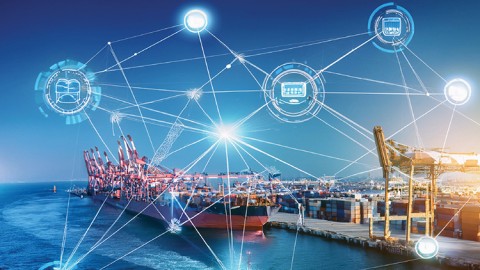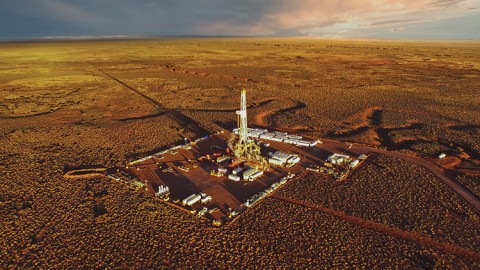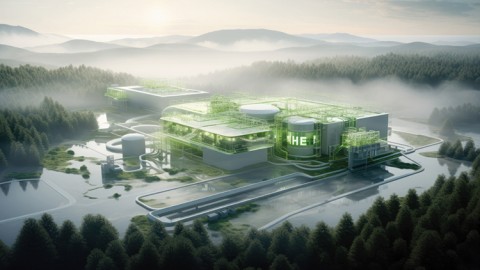Upstream activities have a huge role to play in environmental impacts and could result in high carbon dioxide emissions, increased energy consumption, air pollution, water pollution, soil pollution, deforestation, flooding, and even endangered biodiversity. Land clearing, hydrocarbon extraction from inside the soil, feasibility testing, construction and processing, transportation, storage, and distribution to the first customer are all part of the upstream phase in the oil and gas sector; all of which require technological remediation procedures to ensure land preservation and environmental conservation.
For environmental conservation operations, there are a variety of remediation methods that may be categorized as in situ or ex situ, for soil, surface, or groundwater remediation, or based on the physics or chemistry of the procedure. The vast majority of approaches are classified as physical procedures, with only one biological procedure, biodegradation, falling into this group. Chemical therapies entail the use of chemicals to aid in the retrieval of dangerous material, while physical treatments entail the physical removal of the risk. The main benefits of different remediation approaches are determined by their large-scale applicability and total cost.
Technical Innovations
Most sites are remedied using one of three main techniques, which are used independently or in combination; contaminants could be removed or altered, extracted or separated from natural media, or immobilized. Furthermore, the following treatment technologies are capable of eliminating contaminants by modifying their chemical/physical structure: chemical, biological or thermal remediation technologies. Stabilization, solidification, and containment technologies, such as installation in a protected landfill or building of slurry walls, are all examples of immobilization technologies (i.e. physically and chemically remediating contaminated upstream sites).
Since no immobilization technology is ever completely successful, some level of upkeep is needed. For the remediation of areas polluted by metals or other inorganic species, stabilisation methods are often suggested. To arrive at the most efficient treatment system, the most effective contaminant distribution pathways should be used in the selection and incorporation of technologies. More air may be transported by soil than water, for instance. As a result, Soil Vapour Extraction (SVE) would be a more effective isolation technique than soil flushing or washing for a reactive toxicant in soil that is practically insoluble in water.
Petroleum hydrocarbon-contaminated soils can be found in both used and reclaimed areas. During the years of commercial activity on upstream sites, spills and leakage of coal, kerosene, fuels, diesels, lubricating oils, and related chemicals may have caused environmental concerns. Polychlorinated biphenyls (PCB), as well as metals like zinc, lead, and cadmium, contaminate certain soils at brownfield sites. However, even though certain processes are necessary and crucial to upstream activities (such as hydraulic fracking), it is important to recognize that there is a limit as to what environmental impacts could be avoided.
On that note, Fracking is an advanced drilling method that uses high-pressure water and added chemicals to crack the rock surface to remove the extracted oil and gas. Nevertheless, most environmentalists consider fracking to be a recent issue due to the use of groundwater and the need to dispose of waste solutions that can be hazardous after coming into contact with underlying soil, as well as the volatile rock fracking activity through which the crack can stretch to an unknown duration underground. Nonetheless, fracking technology has benefits over traditional exploration in terms of allowing the extraction of natural gas reserves; as a result, ground-breaking fracturing methods are being introduced to minimize environmental effects and consumption of resources.
For upstream oil and gas organizations, site owners, and regulators, a standard collection of remediation requirements are recommended. Upstream petroleum sites, which include well sites, batteries, compressors, upstream waste disposal plants, or other facilities affected by primary drilling, extraction, or transportation of unrefined petroleum resources, are covered by a set of regional guidelines tailored to the site’s conditions.
The Way Forward
The discussed and studied state-of-the-art technologies reflect significant recent developments in Exploration and Production (E&P) that exploited the potential of sophisticated analytical technologies for operational optimization. Not only have information systems and technologies advanced operation management and automation, but data collection and understanding have opened up new avenues for applying technological advancements, due to the rapid growth in computing capacity that has happened recently. As noted by an Operations and Maintenance Manager, who preferred anonymity, “the effect of COVID-19 made most companies less concerned about environmental problems. This does not mean that environmental problems are not taken care of by the trained staff, it means that technology is evolving so that remote solutions can fix upstream brownfield operations so that the ground and water sources are not polluted by such activities.”
As a result, investments in the oil and gas upstream industry are significant and are projected to have totaled $382 billion, with North America accounting for almost 30% of the figure. The investments are distributed through a diverse variety of private industries that aim to develop the most effective and creative technologies that will enable them to break into the market, as well as large corporations looking to retain their power and impact.
Furthermore, exploration and production of oil and gas are inherently dynamic and so the investment operations. In fact, health, atmosphere, technological problems, environmental restrictions, and regional issues are only a few of the obstacles that production companies face. The feasibility and viability of certain exploration areas that face geological difficulties have improved as a result of continued innovation.
To conclude, the oil and gas industry’s upstream processes have a number of phases before producing the final product of oil and gas. Flaring, fracking, and manufacturing operations will continue to have a negative impact on air emissions, global warming, ozone degradation, and public health degradation. From mobilization equipment to drilling operations, and well completions will all have an impact on the air and soil quality during the exploration and production phases.
In other words, these negative effects are suspected to contaminate soil as well as groundwater sources, posing health and environmental threats. The degree and scope of the risk are determined by the amount of material released, its location, exposure mechanisms, and susceptibility to contaminant sources.








